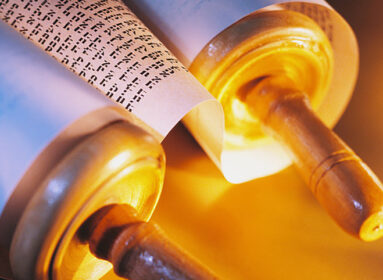By Shlomo Riskin ~
During the majestic and magical evening of the seder, how many matzot does the leader of the proceedings take, two or three? And how many cups of wine do the participants drink, four or five? I daresay the overwhelming majority of my readers will respond: three matzot and four cups of wine. But in my seder, we all take two matzot and drink five cups of wine. Cynics may comment that it is indeed a gastronomic and digestive boon to trade a matzah for a glass of good, red, dry wine, but my reason is purely halakhic and Zionistic, as I hope to prove.
The simple interpretation of a Talmudic passage (Berakhot 39b) would suggest two matzot: “Rav Papa maintains that everyone agrees that on Passover evening, we place the broken matzoh within (or under) the whole matzoh and make a blessing thereon”. This implies two matzot or rather one and one half, and the Vilna Gaon rules that this is our normative practice.
The origin of our usual custom of taking three matzot – two whole and one broken stems from Rashi (Commentary on Pesachim 116a). He insists that we must have two whole matzot to retain our custom of “lechem mishneh” (parallel to our two Shabbat hallah loaves). Maimonides, on the other hand, insists upon one and one-half, ruling that “lehem oni”, the matzah / bread of affliction, trumps “lehem mishneh”, the double portion of the manna which we commemorate on the Sabbath (Laws of Hametz and Matzah 8,6).
I vote with Maimonides, since Passover is only the very beginning of our redemption: Even when we left Egypt, we were still a long distance (and a whole generation) away from the land of Israel, and seven weeks away from the Receiving of the Torah. The “whole” matzah expresses our gratitude for the exodus, but the half matzah is a necessary reminder that our affliction had far from concluded at that point in time.
Let us turn to the wine. Conventional wisdom explains the four cups of wine as emanating from the four expressions of redemption articulated in the Book of Exodus (6:6-7): “I will free you…. I will save you… I will redeem you….I will take you….” But in the very next verse comes the fifth expression, “I will bring you into the land which I swore to give to Abraham, to Isaac and to Jacob” (ibid 8). What happened to the fifth cup?
A cursory glimpse into the order of the cups of wine should explain what occurred. We begin with Kiddush, the first cup, which mentions both the creation and the exodus, and enables us to eat a little hors d’oeuvre of karpas; then we pour the second cup for Maggid, the story of the enslavement and the exodus; we eat the meal of our freedom, replete with reminders of the sacrificial foods, and then pour the third cup for Grace after the Meal.
It is this blessing for the food which, in its prayer for the restoration of Jerusalem, makes reference to its destruction, and in its praise for the God who is good and who does good (HaTov VehaMetiv) reminds us that, after the Hadrianic persecutions following the abortive Bar Kochba rebellion. Now, albeit within the context of praise, the spectra of destruction and exile has entered the Passover seder. At this point, comes the special cup for Elijah (it’s not in the count of four because only Elijah drinks from it), but this is also within the context of exile, since it is introduced with the words, “Pour Your wrath against the Gentiles who do not know You….for they have consumed Jacob and laid waste His habitation…”.
Now comes the fourth cup of Hallel and the recitation of the blessing of the Song (Nishmat, “May the breath of all living souls praise God….”) , with its prayer and gratitude for God’s restoration of Israel to our homeland and Jerusalem (Mishna Pesachim 10,5). A Tosefta substitutes Hallel HaGadol (Psalm 136: “Praised be the Lord… whose loving-kindness extends to the world”) for the Nishmat Prayer. Our haggadah includes Hallel HaGadol as well as Nishmat, until the conclusion of Yishtabach, with the praise to “God, King of all living worlds”.
Each ritual drinking of wine – should refer to a specific theme. Hallel evokes our return to national sovereignty in Israel; Hallel HaGadol and Nishmat refer to redemption of the world. And indeed the Tosafists (as well as the Gaonim and Maimonides) all cite a variant reading, “On the fifth cup, we recite the Blessing of the Song (or Hallel HaGadol)”. Many of the Gaonim actually demand a fifth cup, the Rambam along with most decisors permits it, though he would only endorse reciting Hallel HaGadol with this fifth cup.
Modern scholarship would suggest that in the haggadot of the land of Israel, they always included a fifth cup – and only in our galut haggadot was it excluded. Perhaps from the backdrop of galut the yearning for world redemption seemed a bit too much to ask for. Now that we have returned to our homeland, I would urge the addition of a fifth cup immediately before reciting Hallel HaGadol. In our global village, until the world recognizes our God of peace and morality, no single nation will ever feel secure.
Rabbi Shlomo Riskin is chancellor of Ohr Torah Stone and chief rabbi of Efrat, Israel.







 Southern New England Jewish Ledger
Southern New England Jewish Ledger















